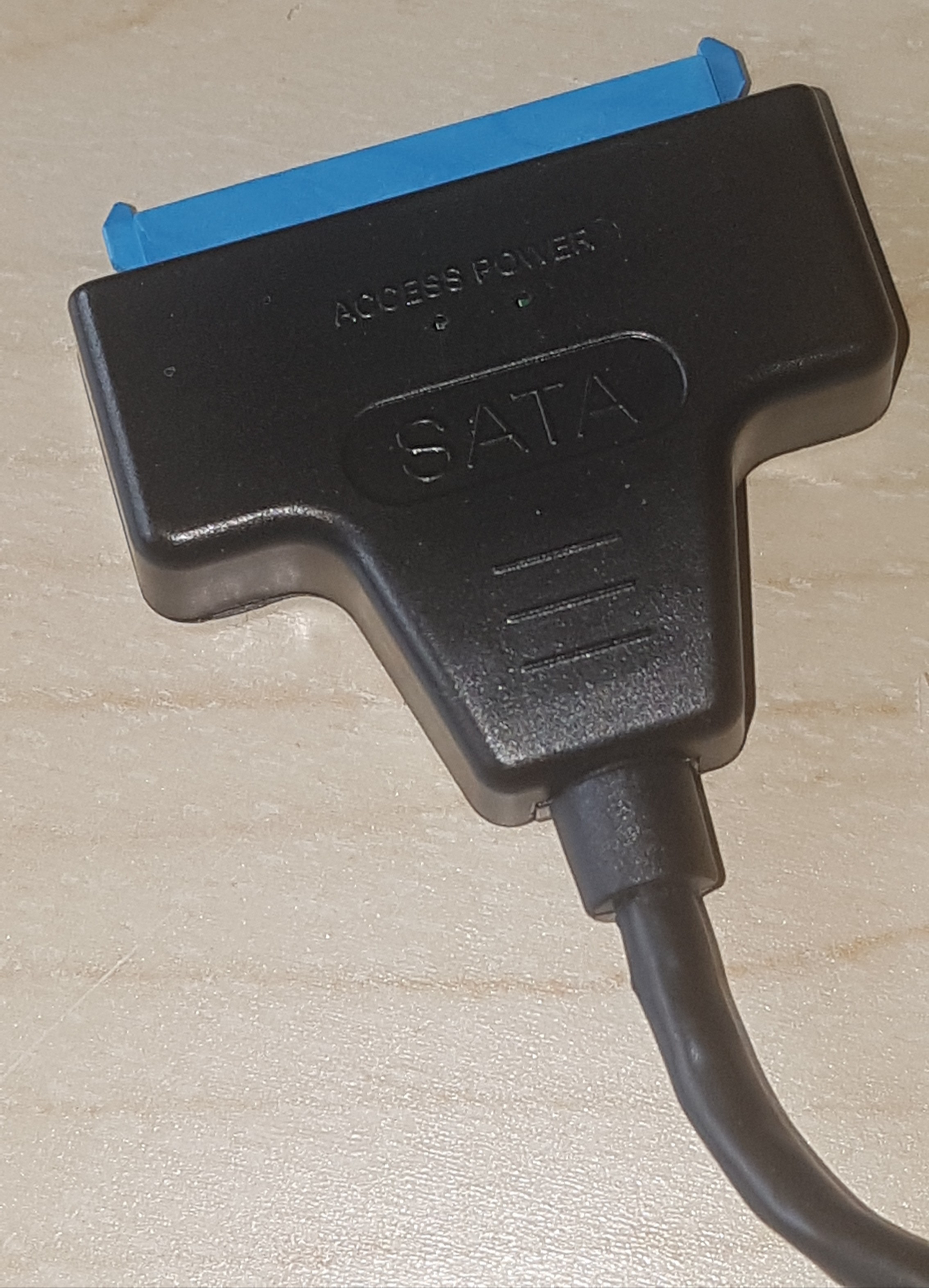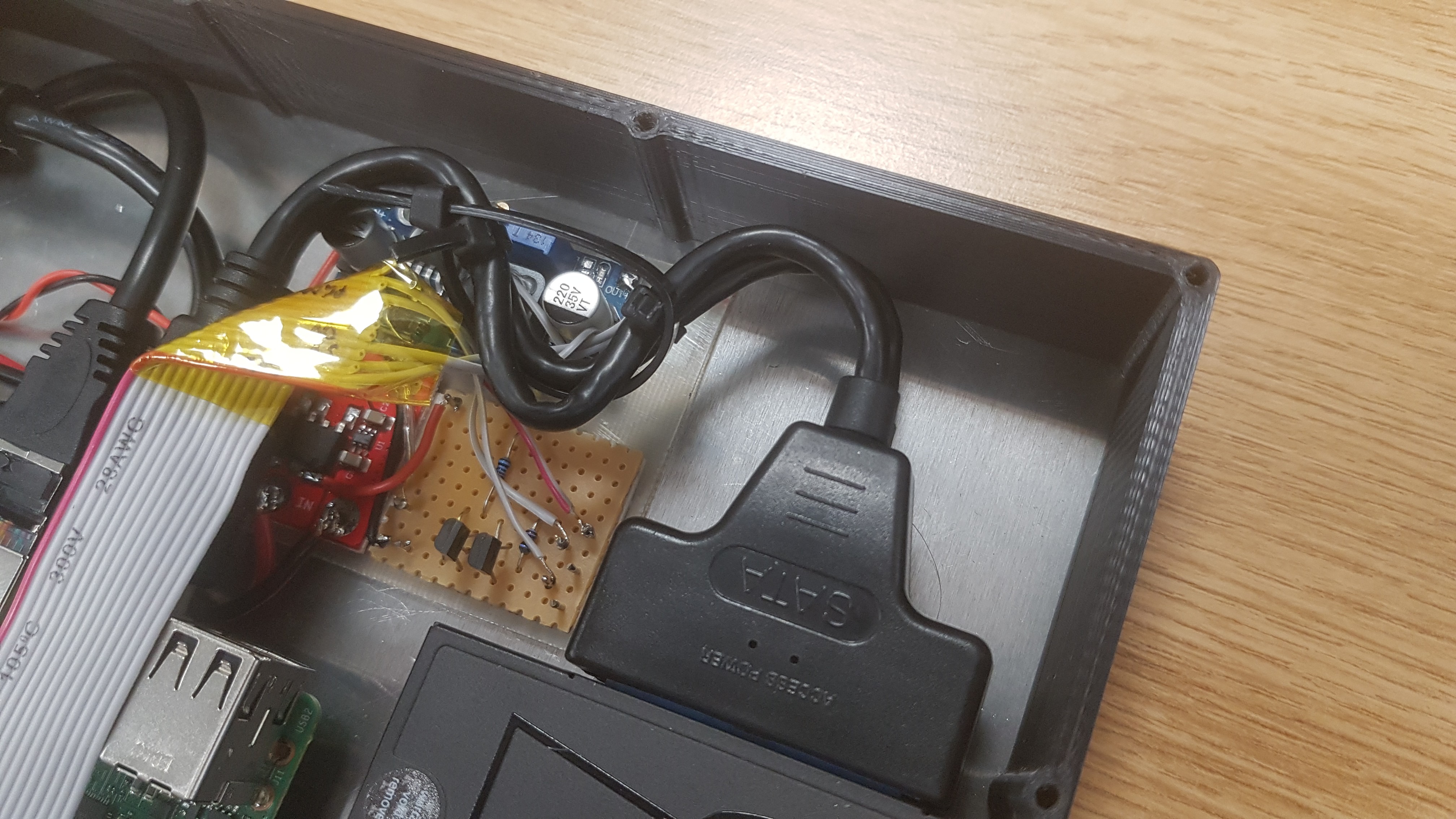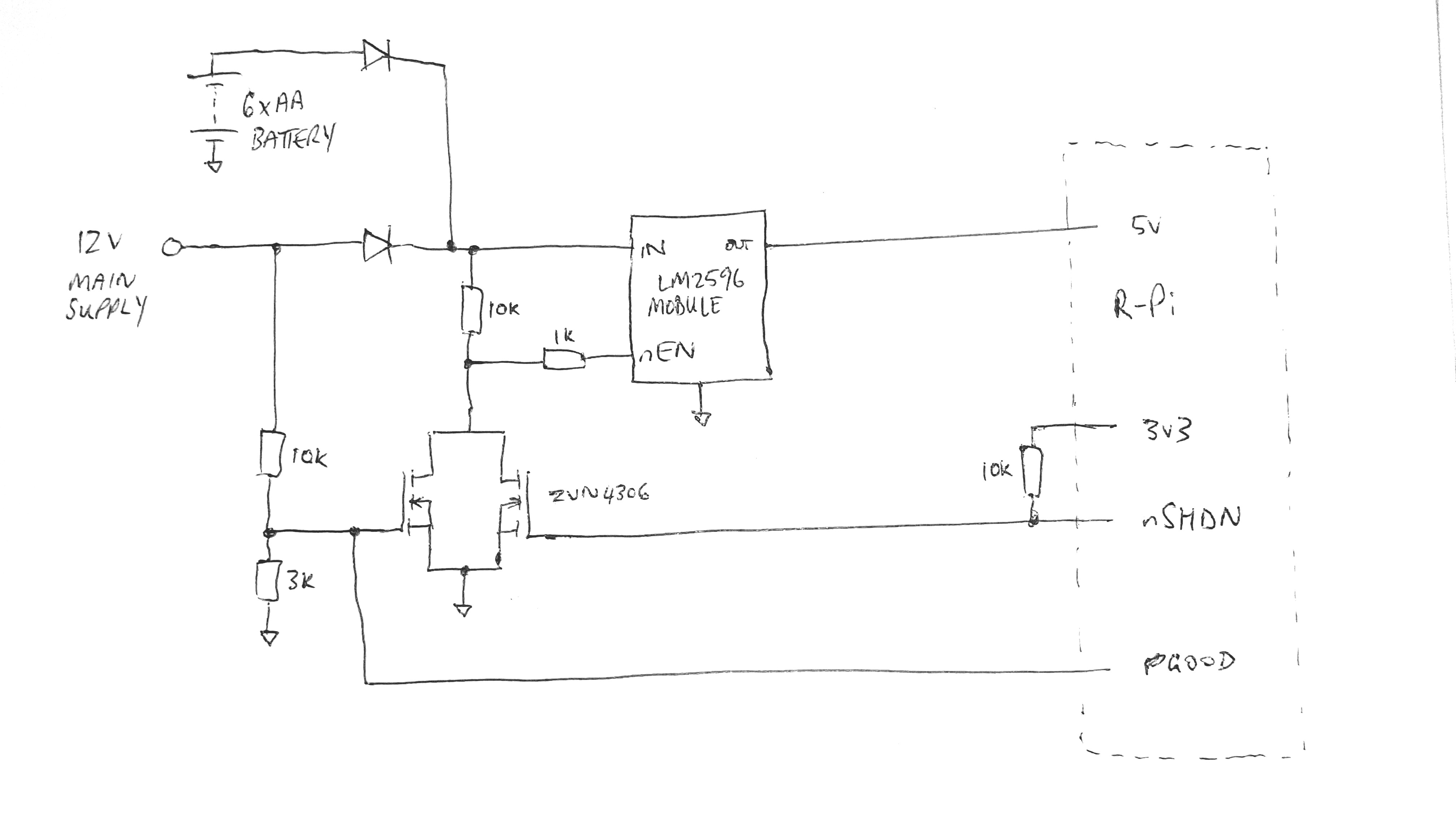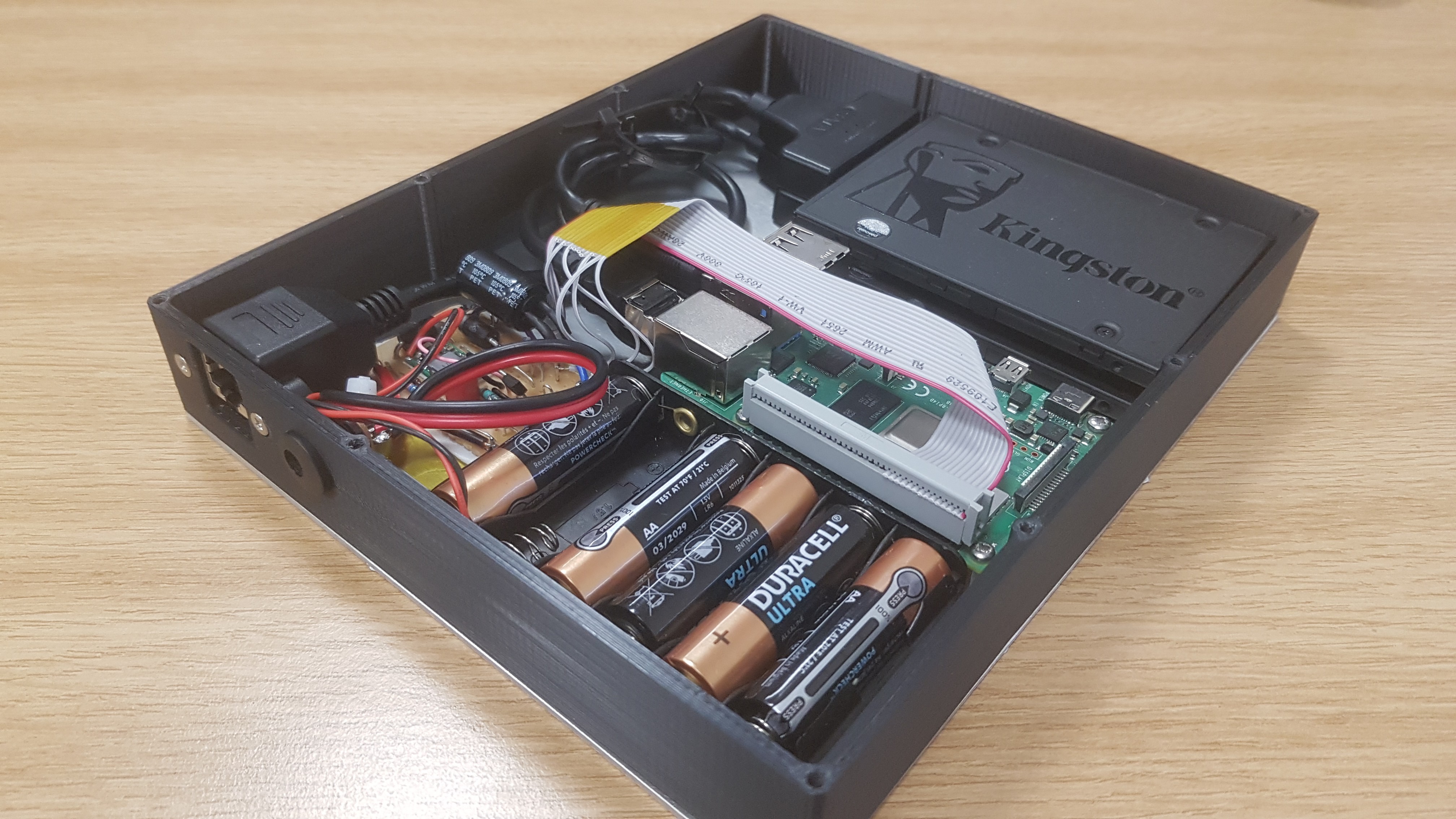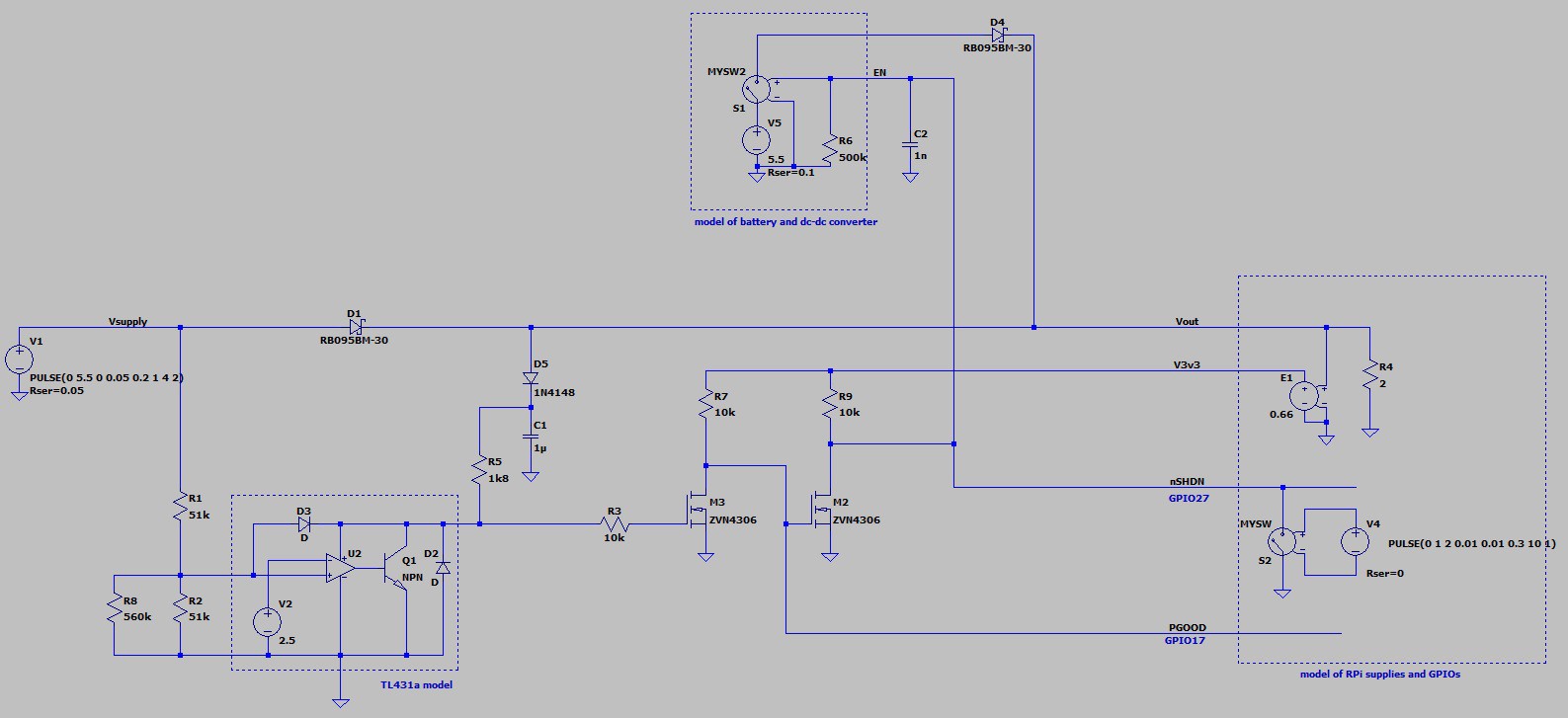-
Catastrophe!
06/19/2020 at 13:42 • 0 commentsTwo days ago the worst thing happened: I tried to access the NAS over the network and couldn't.
I could log in to OMV ok, and interrogated the setup only to discover both Main and Backup filesystems weren't mounted (or mountable) and even the disks themselves were there one minute and gone the next. Everything was very flaky for a while before eventually I had nothing. Occasionally one disk could be mounted for a few seconds and then gone again.
Suspecting (wishing?) the SATA-to-USB adaptors to be the cause, I plugged one of the disks directly into my Windows PC to discover a perfectly healthy disk with an empty, unformatted partition! Eeeeeek! Thankfully, after some searching, it seems Windows doesn't like something about Linux partitions - something to do with GPT, EFI, or whatever...
Plugging the disk, via the duff adaptors, into an old Linux laptop I have confirmed it: one of adaptors did pretty much nothing, the other one repeatedly power-cycled the disk - as evidenced by dmesg logs. For a brief moment, it actually worked, the disk mounted ok and I saw my files! Phew! ...and then it was gone again.
![The culprit The culprit]()
Both of these failed randomly. Perhaps power supply-borne spike, but whatever it wasn't didn't affect anything else. So, two new (much more expensive, branded and guaranteed) SATA-to-USB adaptors later, and everything is back to normal. The lesson: don't buy £5 adaptors from eBay - they are cheap crap that don't work for long.
[PS. I cracked open the case to find a board with a chip marked "JMS578". Comparing the markings on the chip and on-line photos of the genuine JMicron part makes me think this chip is a fake - the typeface isn't the same and it's been laser-etched on. Maybe I'm just paranoid.]
-
Power Supply Upgrade - Much Better
06/01/2020 at 12:48 • 0 commentsTwo months ago I changed around how the power supply works and completely forgot to document it here! Oooops. So, better late than never, here it is:
![]()
Photo of internals showing the new power supply circuit You can see a new bit of Veroboard with a couple of MOSFETs on to do the signalling, the red board is an 'ideal diode' module from eBay, and the blue board is a modified dc-dc converter module.
The net result is that the voltage regulation is now much better, and the NAS has been performing faultlessly ever since - despite numerous unexpected power cuts.
-
More fakes
02/14/2020 at 13:11 • 0 commentsThe LM2596-based module I bought is, of course, a fake. Apart from the dodgy laser-etched case markings, the switching frequency is only 55kHz instead of 150kHz. So now I have to find a real LM2596 and transplant it onto the board, or else risk the fake part not quite being reliable enough.
In the meantime, I've increased the main PSU voltage by a couple of 100mV, and now the RPi is quite happy and doesn't have as many low-voltage warnings.
Maybe I'll park the 'upgrade' idea for a while and see if I still need it...
-
Ok, it works, but I can do better...
02/12/2020 at 14:25 • 0 commentsThe Cheap-O-NAS has been running great for the last few weeks, and I've no major complaints. However, it's not quite perfect. A couple of times, I've pulled the power and it hasn't shut down properly and ended up flattening the batteries completely. And on one occasion it didn't boot up properly.
The immediate problem is that the voltage regulation (for the main supply and the battery backup) is quite poor, so the Pi is regularly detecting low-voltage conditions, especially when the disks are thrashed. This can't be healthy, and probably leads to all sorts of odd, unexpected conditions arising.
The solution is to re-architect the supply circuit, putting a dedicated 5V dc-dc supply right next to the Pi, and powering it all from a much higher voltage (e.g. 12V). A suitable switcher has been identified, only requiring a minor modification to bring its nENABLE pin off the board, so that the supply can be shut down. The whole circuit is much simpler than before, only requiring two transistors and five resistors (plus the supply OR-ing diodes).
![]()
-
Now in a box
01/09/2020 at 20:36 • 0 commentsI managed to 3D print a case with aluminium sheet lid and base. All the bits fit neatly inside with only connectors for power and ethernet - sweet.
![]()
Completed assembly in 3D-printed case -
At last!
12/03/2019 at 15:32 • 0 commentsSuccess at last.
The latest incarnation of the circuit seems to be much better: the signals to/from the Pi are now separated and behave themselves, and the dc-dc converter is definitely off (<1uA current) normally.
![]()
The 3 second delay prior to shutting down still isn't working, but maybe that's an OS problem that will eventually get fixed in some later update... For now, I think it's safe to use as a NAS will real data on it!
I've now got an 'ideal diode' module, so will try swapping it for the main Schottky so that the supply voltage doesn't bump up and down so much with load current.
-
More fiddling
11/29/2019 at 16:46 • 0 commentsI've found that with a screen plugged into the HDMI output, when pulling the power the RPi instantly reboots. Without a screen, the RPi correctly shuts down cleanly as intended by the gpio-shutdown overlay. No observable difference can be seen in the 'scope traces of the power supply for these two situations, so the rebooting is not being caused by my power management circuit, I don' think.
- why the heck should having an HDMI screen plugged in make any difference?!
Also,
dtoverlay=gpio-poweoff,gpiopin=27,active_low=1...works and the Pi drives it from high to low after shut down. But
dtoverlay=gpio-poweoff,gpiopin=27,active_low=1,input=1...with the pin as an input normally does not for some reason. The pin correctly turns into an input (apparently without the pull-up I was expecting it to have), but doesn't get driven low after the Pi has shut down. Instead the Pi instantly restarts without shutting down.
However, disconnecting my circuit, and pulling GPIO27 up to 3V3 with just a resistor does work. A low is seen just after (proper) shut down. I suspect somehow GPIO27 is triggering GPIO17 which is programmed to shut the Pi down!
Check the files for a v3 LTSpice circuit with an extra MOSFET switch. This isolates PGOOD from nSHDN to solve this problem, and also drives the ENable (to ensure the dc-dc module is properly off in normal use).
-
One step forward and...
11/26/2019 at 13:17 • 0 commentsI ended up modding the mains power supply to produce ~5.5V instead of ~5.0V so that downstream of the Schottky the supply rail was about 5V. Now, when the main supply is pulled, the Pi no longer immediately restarts. Instead, it appears to initiate the shutdown as intended. There are still some problems though:
- the 'debounce' part of the dtoverlay doesn't seem to be working, as it begins shutting down immediately rather than after a couple of seconds
- the GPIO pin that is meant to drive low after shutting down doesn't appear to do anything, so the power never gets turned off
- in normal state, the dc-dc converter isn't quite fully off (the EN line is at about 1.3V) and seems to be sucking ~1mA instead of the ~0.2uA I get when EN is pulled to 0V properly. That will flatten the batteries in no time... [edit: EN needs to be less than about 0.9V for the standby current to be around 0.2uA]
Still more to be done then!
-
Rebooting when power interrupted
11/22/2019 at 09:43 • 0 commentsJust found this: https://www.raspberrypi.org/forums/viewtopic.php?t=50470
Kinda very relevant, but no mention of the Pi restarting at the instant the main and backup supplies switch over. Maybe earlier versions of the Pi don't have brownout resets?
Oh, and then there's this: https://thepihut.com/products/ups-pico?variant=20063191203902
...which I could just buy. :(
The RPi4 seems to use the MxL7704 PMIC, instead of the APX803 supervisory IC used in earlier versions. The 7704 does not have a brown-out reset line, so for my Pi to be resetting itself, something must be triggering that reset indirectly by monitoring the PGOOD lines. It's probably not helped by the supply already being low enough for the lightning bolt to be showing (<4.65V), likely due to the drop across the Schottky. I'll have to get the thing hooked up to a 'scope to see how big the glitch is. Adding 1000uF to the 5V rail did not cure it.
-
First light
11/21/2019 at 13:00 • 0 commentsLast night I finally plugged everything in together for the first time. I had lots of problems getting the Pi to boot properly and produce an HDMI signal so I could actually see what was happening. Eventually I got it sorted, and was able to configure OpenMediaVault. Halfway through trying to set up the two disks as RAID1 I seemed to have more problems, and then stumbled across lots of stuff about RAID1 being effectively useless when used with USB disks (presumably due to the need to share the bus, rather than having independent controllers like SATA - IDK, I'm not an expert). I also thought a bit more about what I actually want the NAS to achieve, and maybe RAID isn't it.
So tonight I'll start again. This time I'm going to ignore RAID altogether, and set up a Main disk and a Backup disk, and use OMV to schedule automatic, incremental backups of one onto the other. So I kind of get the dual redundancy I wanted, as well as some protection against human error like accidentally deleting files.
Oh, ps. the fail-over power didn't quite work. Upon pulling the plug, the Pi instantly rebooted. But at least that means the batteries had taken over and were able to supply the power required. I guess the Pi's SoC has a brown-out detect that got triggered by some minute glitch. Something to fix later.
